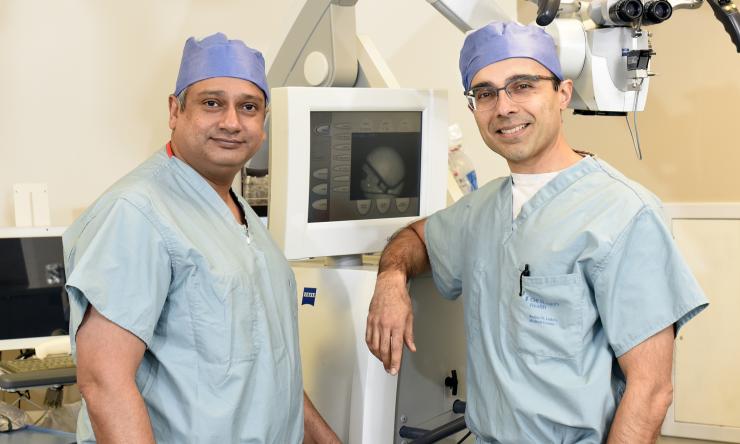Baylor St. Luke’s adopts new Parkinson’s disease treatment
New technology in deep brain stimulation is making treatment of Parkinson’s disease more precise and easier to maintain for the millions of people living with the debilitating disease. Baylor College of Medicine doctors at Baylor St. Luke’s Medical Center are the first group in the state to use the most recently FDA-approved advancements in this field, allowing them to treat patients’ symptoms through highly personalized therapy.
Dr. Ashwin Viswanathan and Dr. Sameer Sheth, both associate professors of neurosurgery at Baylor and neurosurgeons at Baylor St. Luke’s, have led the first team in Texas to use the latest FDA-approved technology, the Vercise™ Gevia™ Deep Brain Stimulation Systems featuring the Vercise Cartesia™ Directional Lead by Boston Scientific.
Parkinson’s disease is a neurodegenerative disorder that causes stiffness, slowness and tremors due to the decrease in dopamine production in the brain.
Deep brain stimulation is a therapy that delivers targeted electrical stimulation to the brain using an implanted device. A pacemaker-like battery generates the electrical pulses, which travel to precise brain regions through leads (thin wires) resulting in a lessening of tremors or other symptoms. For many it not only reduces tremors but also improves quality of life, allowing some to regain normal function. While this technique has been used for decades, advancements in technology have resulted in improved outcomes.
This newest system featuring the Vercise Cartesia Directional Lead leverages eight individually controlled electrodes on each lead. The arrangement of these electrodes and new battery technology gives doctors the ability to more precisely target symptomatic brain regions, so that patients experience better symptom control and fewer unwanted side effects.
“Well-designed studies have already demonstrated that selected patients who undergo DBS will enjoy a better quality of life. Technology has evolved substantially, and we now have the ability to create the most optimal stimulation field for a given patient, with the hope of maximizing the therapeutic potential of DBS,” Viswanathan said.
New features make living with the device easier on the patient as well. It is smaller than past versions and has a rechargeable battery that lasts more than 15 years. There also is independent current control over the directional leads, providing a greater degree of stimulation field shaping, and broader range of stimulation parameters, allowing more flexibility in programming.
“The additional features of this DBS system allow us to better tailor stimulation to each patient’s needs. Because every patient is different, this greater degree of control will be very helpful for individualizing therapy, which translates into better symptom reduction and fewer stimulation-induced side effects for our patients,” Sheth said.










